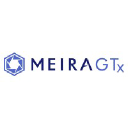Companies
Discover all trending biotech companies
Discover all trending biotech companies

Company Research Platform
Annual Revenue
$ 33,300,000
Global Employees
372
This segment focuses on the development of gene therapies for inherited retinal diseases (IRDs) such as Achromatopsia, X-Linked Retinitis Pigmentosa (XLRP), and RPE65-deficiency. Research and development efforts are directed towards designing and delivering adeno-associated virus (AAV) vectors to target specific retinal cells and restore visual function. Clinical trials are underway to assess the safety and efficacy of these therapies in patients with IRDs. The goal is to provide long-lasting vision improvement or prevent further vision loss in individuals with these debilitating conditions. The company's vertically integrated manufacturing capabilities provide a competitive advantage in producing high-quality gene therapy products for clinical development and potential commercialization. Future opportunities include expanding the pipeline to address other IRDs and developing next-generation gene therapy technologies for improved efficacy and safety.
This segment is dedicated to developing gene therapies for neurodegenerative diseases, including amyotrophic lateral sclerosis (ALS) and Parkinson's disease. The research focuses on identifying genetic targets and developing AAV-based gene therapies to address the underlying causes of these diseases. Preclinical studies are conducted to evaluate the potential of these therapies to protect neurons, reduce inflammation, and improve motor function. Clinical programs are being initiated to assess the safety and efficacy of these gene therapies in patients with ALS and Parkinson's disease. The collaboration with Hologen AI aims to expedite the Phase 3 development of Parkinson's treatment. The objective is to develop disease-modifying therapies that can slow down or halt the progression of these devastating neurological conditions, improving the quality of life for patients and their families. Future opportunities include expanding the pipeline to address other neurodegenerative diseases and exploring novel gene delivery methods to enhance therapeutic efficacy.
This segment is focused on developing gene therapies for salivary gland disorders, specifically radiation-induced Xerostomia following radiation treatment for head and neck cancers, and Xerostomia related to Sjogren's syndrome. The research involves developing gene therapies to restore salivary gland function and alleviate the symptoms of dry mouth. Clinical trials are underway to evaluate the safety and efficacy of these therapies in patients with Xerostomia. The goal is to provide long-lasting relief from dry mouth and improve the quality of life for individuals suffering from these conditions. Future opportunities include expanding the pipeline to address other salivary gland disorders and developing novel gene delivery methods for targeted gene therapy.